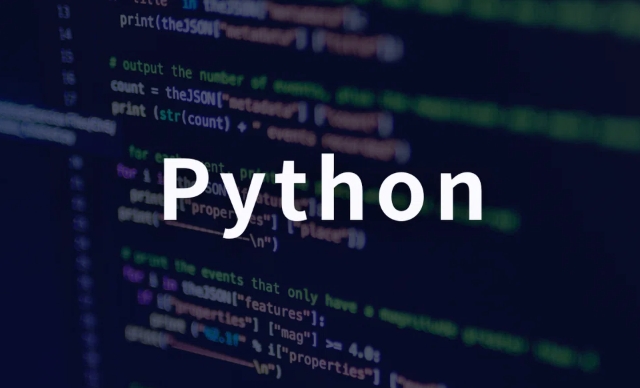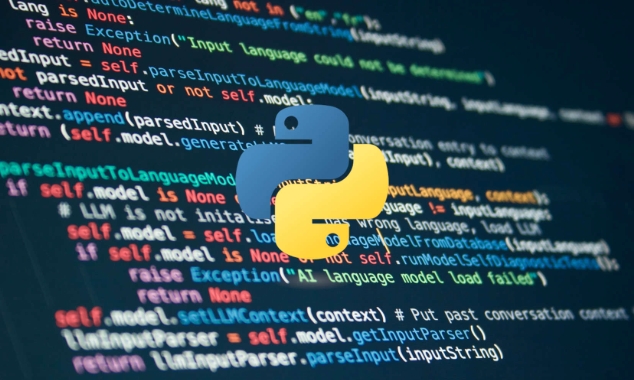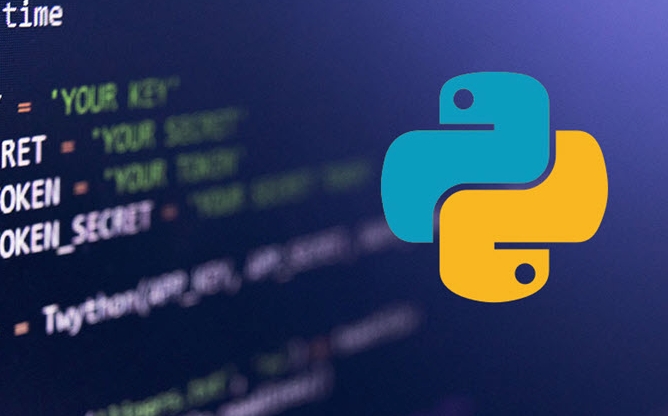Python can handle parallel data processing effectively by using the right tools and approaches. First, use multiprocessing instead of threading for CPU-bound tasks to bypass the Global Interpreter Lock (GIL). Second, leverage multiprocessing.Pool for parallel map/reduce patterns while being cautious with inter-process communication and ensuring picklable functions and data. Third, consider Dask or Joblib for handling larger-than-memory datasets or batch workloads, where Dask extends pandas and NumPy for parallelism and Joblib simplifies parallel loops, especially in machine learning. Fourth, optimize data sharing by using shared memory, avoiding redundant data transfers, pre-loading and chunking data, and managing file writes carefully. Lastly, employ Numba or Cython for performance-critical sections, combining them with multiprocessing to achieve near-C speeds and better overall efficiency.

Python isn’t always the first choice for high-performance computing, but with the right tools and structure, it can handle parallel data processing effectively. The key is knowing how to work around its limitations—like the Global Interpreter Lock (GIL)—and choosing the right libraries and execution model for your task.

Use Multiprocessing Instead of Threading for CPU-Bound Tasks
Threading in Python is great for I/O-bound tasks like downloading files or waiting on network responses. But for data processing that’s heavy on CPU usage, threading hits a wall because of the GIL, which allows only one thread to execute Python bytecode at a time.
Multiprocessing sidesteps this by spawning separate processes, each with its own Python interpreter and memory space. This means true parallel execution.

- Use
multiprocessing.Poolfor easy parallel map/reduce patterns - Be cautious with inter-process communication—it can get slow if you're passing large data structures
- Serialization (using pickle) happens behind the scenes, so make sure your functions and data are picklable
For example, if you're applying a heavy function to each item in a large list, Pool.map() can distribute that across cores with minimal code changes.
Consider Dask or Joblib for Larger-than-Memory or Batch Workloads
If you're working with data that doesn’t fit into memory or want a more scalable approach, Dask is a great option. It extends pandas and NumPy with parallel and distributed computing capabilities.

- Dask DataFrames work like pandas but can handle data larger than RAM
- Dask.delayed() lets you parallelize custom workflows with minimal refactoring
- Dask can scale from a laptop to a cluster without code changes
Joblib is another lightweight option, especially useful in machine learning workflows. It’s built for transparent disk caching and simple parallel loops.
- Use
Parallel(n_jobs=-1)to use all CPU cores - Great for loops that run the same function multiple times with different inputs
Optimize Data Sharing and Reduce Overhead
When working with parallel processes, data copying and communication can become a bottleneck. Here are a few ways to reduce that overhead:
- Use shared memory with
multiprocessing.Valueormultiprocessing.Arrayfor small shared state - Avoid passing large datasets between processes repeatedly—load data once per process if possible
- Pre-load data into chunks and assign each process a chunk to work on independently
Also, be mindful of how you're reading and writing files. If multiple processes are trying to write to the same file, you’ll run into race conditions. A good workaround is to have each process write to a separate file and merge them afterward.
Don’t Overlook Numba or Cython for Performance-Critical Sections
If you're doing heavy numerical computation, consider offloading that work to compiled code using Numba or Cython. Both allow you to write Python-like code and get near-C performance.
- Numba works best with NumPy arrays and numerical loops
- Cython gives you more control by letting you statically type variables and call C functions
These tools can be used alongside multiprocessing to get even better performance. For example, use multiprocessing to split the data, and Numba to crunch numbers inside each process.
That’s basically it. Parallel data processing in Python doesn’t have to be magic. It’s more about choosing the right tool for the job and being aware of where the bottlenecks tend to show up.
The above is the detailed content of Optimizing Python for Parallel Data Processing. For more information, please follow other related articles on the PHP Chinese website!

Hot AI Tools

Undress AI Tool
Undress images for free

Undresser.AI Undress
AI-powered app for creating realistic nude photos

AI Clothes Remover
Online AI tool for removing clothes from photos.

Clothoff.io
AI clothes remover

Video Face Swap
Swap faces in any video effortlessly with our completely free AI face swap tool!

Hot Article

Hot Tools

Notepad++7.3.1
Easy-to-use and free code editor

SublimeText3 Chinese version
Chinese version, very easy to use

Zend Studio 13.0.1
Powerful PHP integrated development environment

Dreamweaver CS6
Visual web development tools

SublimeText3 Mac version
God-level code editing software (SublimeText3)

Hot Topics
 Polymorphism in python classes
Jul 05, 2025 am 02:58 AM
Polymorphism in python classes
Jul 05, 2025 am 02:58 AM
Polymorphism is a core concept in Python object-oriented programming, referring to "one interface, multiple implementations", allowing for unified processing of different types of objects. 1. Polymorphism is implemented through method rewriting. Subclasses can redefine parent class methods. For example, the spoke() method of Animal class has different implementations in Dog and Cat subclasses. 2. The practical uses of polymorphism include simplifying the code structure and enhancing scalability, such as calling the draw() method uniformly in the graphical drawing program, or handling the common behavior of different characters in game development. 3. Python implementation polymorphism needs to satisfy: the parent class defines a method, and the child class overrides the method, but does not require inheritance of the same parent class. As long as the object implements the same method, this is called the "duck type". 4. Things to note include the maintenance
 Python Function Arguments and Parameters
Jul 04, 2025 am 03:26 AM
Python Function Arguments and Parameters
Jul 04, 2025 am 03:26 AM
Parameters are placeholders when defining a function, while arguments are specific values ??passed in when calling. 1. Position parameters need to be passed in order, and incorrect order will lead to errors in the result; 2. Keyword parameters are specified by parameter names, which can change the order and improve readability; 3. Default parameter values ??are assigned when defined to avoid duplicate code, but variable objects should be avoided as default values; 4. args and *kwargs can handle uncertain number of parameters and are suitable for general interfaces or decorators, but should be used with caution to maintain readability.
 Explain Python generators and iterators.
Jul 05, 2025 am 02:55 AM
Explain Python generators and iterators.
Jul 05, 2025 am 02:55 AM
Iterators are objects that implement __iter__() and __next__() methods. The generator is a simplified version of iterators, which automatically implement these methods through the yield keyword. 1. The iterator returns an element every time he calls next() and throws a StopIteration exception when there are no more elements. 2. The generator uses function definition to generate data on demand, saving memory and supporting infinite sequences. 3. Use iterators when processing existing sets, use a generator when dynamically generating big data or lazy evaluation, such as loading line by line when reading large files. Note: Iterable objects such as lists are not iterators. They need to be recreated after the iterator reaches its end, and the generator can only traverse it once.
 Python `@classmethod` decorator explained
Jul 04, 2025 am 03:26 AM
Python `@classmethod` decorator explained
Jul 04, 2025 am 03:26 AM
A class method is a method defined in Python through the @classmethod decorator. Its first parameter is the class itself (cls), which is used to access or modify the class state. It can be called through a class or instance, which affects the entire class rather than a specific instance; for example, in the Person class, the show_count() method counts the number of objects created; when defining a class method, you need to use the @classmethod decorator and name the first parameter cls, such as the change_var(new_value) method to modify class variables; the class method is different from the instance method (self parameter) and static method (no automatic parameters), and is suitable for factory methods, alternative constructors, and management of class variables. Common uses include:
 How to handle API authentication in Python
Jul 13, 2025 am 02:22 AM
How to handle API authentication in Python
Jul 13, 2025 am 02:22 AM
The key to dealing with API authentication is to understand and use the authentication method correctly. 1. APIKey is the simplest authentication method, usually placed in the request header or URL parameters; 2. BasicAuth uses username and password for Base64 encoding transmission, which is suitable for internal systems; 3. OAuth2 needs to obtain the token first through client_id and client_secret, and then bring the BearerToken in the request header; 4. In order to deal with the token expiration, the token management class can be encapsulated and automatically refreshed the token; in short, selecting the appropriate method according to the document and safely storing the key information is the key.
 What are Python magic methods or dunder methods?
Jul 04, 2025 am 03:20 AM
What are Python magic methods or dunder methods?
Jul 04, 2025 am 03:20 AM
Python's magicmethods (or dunder methods) are special methods used to define the behavior of objects, which start and end with a double underscore. 1. They enable objects to respond to built-in operations, such as addition, comparison, string representation, etc.; 2. Common use cases include object initialization and representation (__init__, __repr__, __str__), arithmetic operations (__add__, __sub__, __mul__) and comparison operations (__eq__, ___lt__); 3. When using it, make sure that their behavior meets expectations. For example, __repr__ should return expressions of refactorable objects, and arithmetic methods should return new instances; 4. Overuse or confusing things should be avoided.
 How does Python memory management work?
Jul 04, 2025 am 03:26 AM
How does Python memory management work?
Jul 04, 2025 am 03:26 AM
Pythonmanagesmemoryautomaticallyusingreferencecountingandagarbagecollector.Referencecountingtrackshowmanyvariablesrefertoanobject,andwhenthecountreacheszero,thememoryisfreed.However,itcannothandlecircularreferences,wheretwoobjectsrefertoeachotherbuta
 Python `@property` decorator
Jul 04, 2025 am 03:28 AM
Python `@property` decorator
Jul 04, 2025 am 03:28 AM
@property is a decorator in Python used to masquerade methods as properties, allowing logical judgments or dynamic calculation of values ??when accessing properties. 1. It defines the getter method through the @property decorator, so that the outside calls the method like accessing attributes; 2. It can control the assignment behavior with .setter, such as the validity of the check value, if the .setter is not defined, it is read-only attribute; 3. It is suitable for scenes such as property assignment verification, dynamic generation of attribute values, and hiding internal implementation details; 4. When using it, please note that the attribute name is different from the private variable name to avoid dead loops, and is suitable for lightweight operations; 5. In the example, the Circle class restricts radius non-negative, and the Person class dynamically generates full_name attribute






